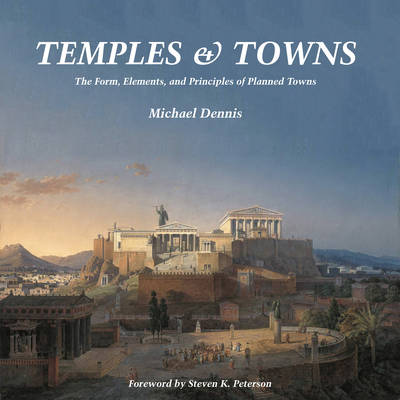
- Afhalen na 1 uur in een winkel met voorraad
- Gratis thuislevering in België vanaf € 30
- Ruim aanbod met 7 miljoen producten
- Afhalen na 1 uur in een winkel met voorraad
- Gratis thuislevering in België vanaf € 30
- Ruim aanbod met 7 miljoen producten
Temples and Towns
The Form, Elements, and Principles of Planned Towns
Michael DennisOmschrijving
It begins with the planned cities of Greece and the Roman Empire from about 500 BC, through the late-medieval Bastides, the Ideal Renaissance cities, and Baroque new towns, to the urban planning strategies of the nineteenth and early twentieth centuries. It covers anti-urban modernist architecture and the resulting disintegration of the city. It concludes with late-twentieth-century efforts to recover the city, a contemporary urban architecture, and urbanism's potential contribution to the contemporary ecological crisis.
The book is project oriented and extensively illustrated. It may be read graphically, textually, or both. As such, it falls into the long tradition of illustrated treatises in which theory is embedded in the projects, with only occasional assistance or clarification from the text. Architecture and urban design are physical arts, not verbal arts, and they are best understood from graphic representations.
Specificaties
Betrokkenen
- Auteur(s):
- Uitgeverij:
Inhoud
- Aantal bladzijden:
- 504
- Taal:
- Engels
Eigenschappen
- Productcode (EAN):
- 9781957183022
- Verschijningsdatum:
- 18/10/2022
- Uitvoering:
- Paperback
- Formaat:
- Trade paperback (VS)
- Afmetingen:
- 267 mm x 264 mm
- Gewicht:
- 2440 g

Alleen bij Standaard Boekhandel
Beoordelingen
We publiceren alleen reviews die voldoen aan de voorwaarden voor reviews. Bekijk onze voorwaarden voor reviews.











